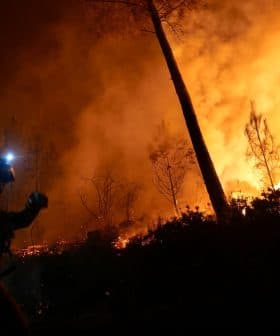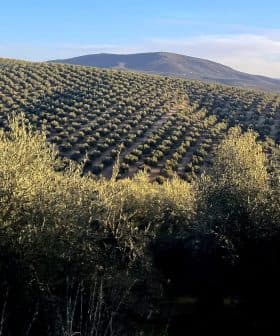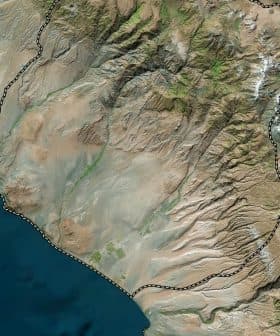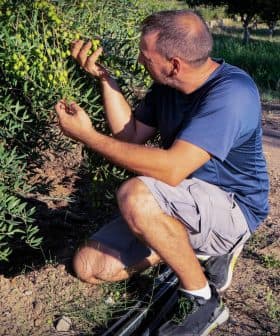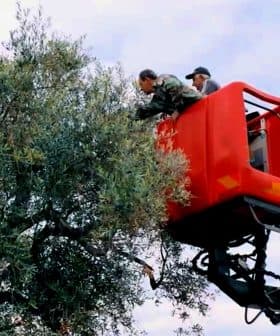Coronavirus Impacts Some Australian Growers More Than Others as Harvest Nears
While much of the world grinds to a halt in the midst of the Covid-19 pandemic, olive growers in Australia are getting ready to harvest.
 Boundary Bend
Boundary BendAs Covid-19 cases rise in Australia, preparations for the 2020 olive harvest are underway, with expectations of a lower crop than in 2019. Olive growers and oil producers are operating as essential services with new health and safety guidelines, facing challenges such as water shortages, bird damage, and travel restrictions impacting labor availability and sales.
As the tally of Covid-19 cases and deaths steadily rise in Australia, preparations for the upcoming 2020 harvest are already underway.
“The vast majority of the main producing regions tend to start toward mid to late April,” Leandro Ravetti, an agricultural engineer and olive oil expert, told Olive Oil Times. “We are expecting a lower level of crop if compared with the record crop in 2019, but certainly better than in 2018.”
I am concerned that most growers are living with government dictates which are suitable for the general populace but are a bit lacking for each specific horticultural venture.
Olive growers and oil producers, like most other agriculturalists in the country, have been considered essential services and will continue to operate as normal, with some new health and safety guidelines.
For some producers, this means business as usual.
“Most producers are quite self-sufficient in Australia so a lot of the restriction measures are not having a significant impact on their preparations for harvest,” Ravetti said. “Restrictions on people’s movements have forced some changes in staff arrangements and additional hygiene and isolation practices have been put in place.”
See Also:Covid-19 NewsHowever, for others, the novel coronavirus presents yet another challenge in a year that began with record-breaking wildfires and sustained drought.
In Western Australia, which is home to one of the country’s two largest producers, diminishing water resources coupled with damage caused by animals to some olive groves have already caused plenty of headaches for growers and producers.
“The season has had good weather for growing, but many growers have stated that bird damage has been excessive in groves that are well down on their anticipated production,” Steve Milton, an olive grower and the president of the Western Australian Olive Council (WAOC), told Olive Oil Times. “Added to this, water supplies have been a bit stretched for many. Harvest production is expected to be patchy.”
On top of these setbacks, producers now must contend with the Covid-19 pandemic and all of its associated side effects.
“Covid-19 is a royal pain. The timing couldn’t be worse,” Milton said. “Olive growers are setting up for harvest, getting fuel stocks ready, organizing harvesters and the labor force, and dealing with last-minute changes as we purchase ingredients for processing.”
Some growers in the state are also worried about newly-imposed restrictions on inter-region travel. They fear that these restrictions may hurt their ability to contract seasonal laborers.
“Mobility is going to become an issue [now that] movement between regions is restricted,” Milton said.
On March 27, Western Australia placed new travel restrictions on people coming into and out of the state. South Australia, another olive growing region, has also implemented travel restrictions. Victoria and New South Wales have not.
While travel for work will be permitted in regions with these new restrictions, it remains unclear how seasonal workers will be impacted.
“How growers will access pickers is a question that many are asking,” Milton said. “This isn’t insurmountable, but training and managing safety space will become an issue. There are only a few mechanical harvesters in Western Australia, so those growers who are not able to contract pickers will be competing for harvest support.”
Along with the logistical challenges presented by Covid-19, Milton and many of the country’s other olive growers also worry about the lack of clarity provided by the Australian government for each type of agricultural activity.
“I am concerned that most growers are living with government dictates which are suitable for the general populace but are a bit lacking for each specific horticultural venture,” he said. “Filling that gap from my role in WAOC is fraught as we want to avoid rumor but need to keep up with interpreting those changes in order to keep the mental state of growers in a positive and productive mode.”
“Currently, most growers are doing what they normally do and live in hope,” he added. “I know that some olive presses have established clear personal space procedures and these will be easy to work with.”
While many producers prepare themselves for a challenging harvest, others are worried about the impact that the virus will have on sales. Bars, restaurants, markets and specialty shops are all closed in the country.
Similarly to other countries facing coronavirus, extra virgin olive oil sales in Australia briefly spiked as the crisis began to unfold and Australians stocked up on supplies from the supermarket. Since then, however, selling opportunities for small producers have dried up.
“The biggest impact has been for smaller producers selling through farmers markets, those with grove door sales and those with sales into the foodservice market,” Greg Seymour, the CEO of the Australian Olive Association (AOA), told Olive Oil Times.
While this has led some producers to shift to online sales, Seymour thinks there is no replacement for face-to-face interactions in the olive oil business. He is also concerned about the impact that closing food service companies will have, since many of them source olive oil locally.
“Sales in foodservice are the major concern,” he said. “Many dining establishments have closed indefinitely and businesses depending on international tourism have disappeared overnight.”



